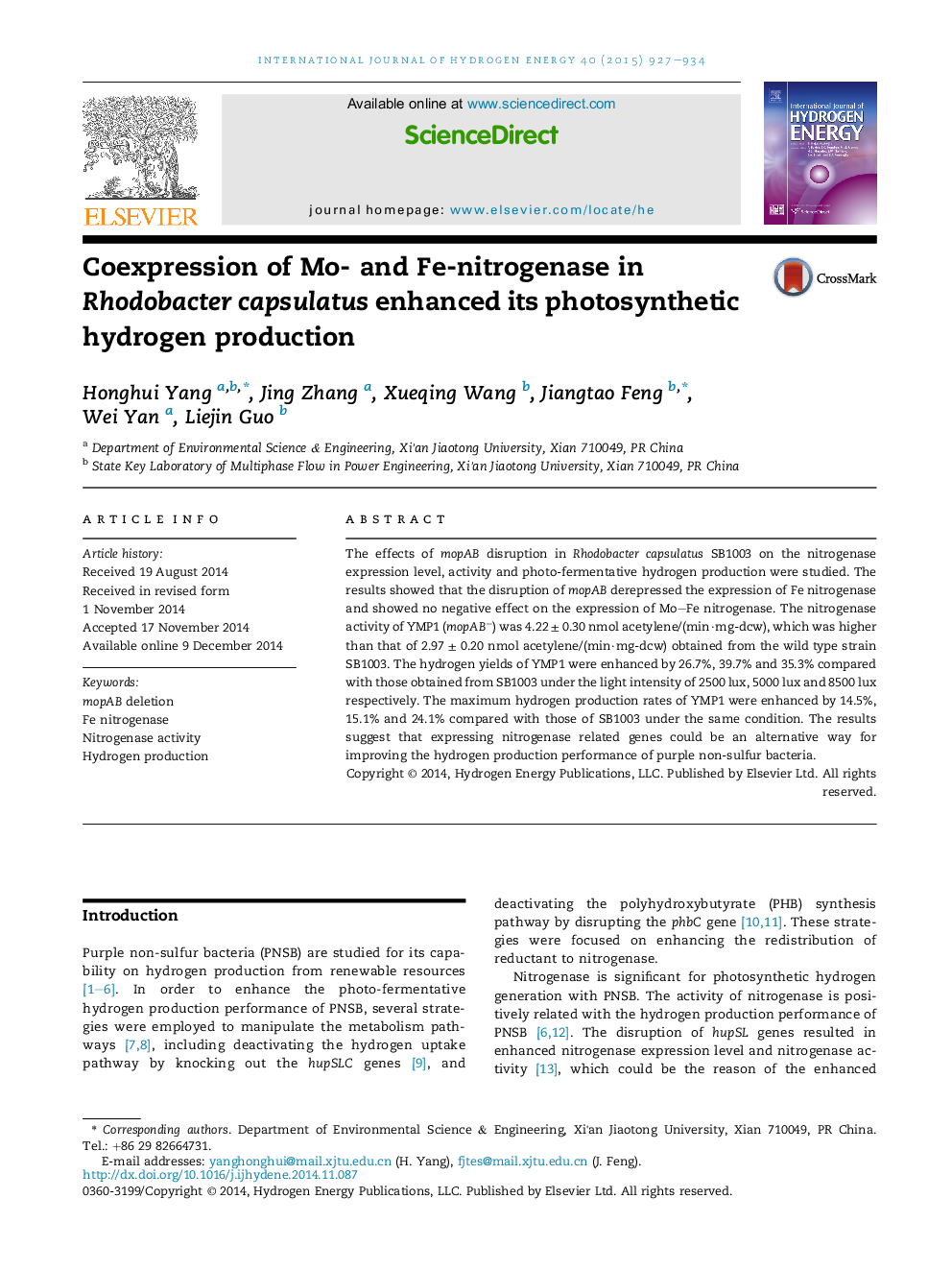| Article ID | Journal | Published Year | Pages | File Type |
|---|---|---|---|---|
| 1270189 | International Journal of Hydrogen Energy | 2015 | 8 Pages |
•Effect of mopAB disruption on H2 production was studied for the first time.•Deletion of mopAB showed no negative effect on nitrogenase activity in Rhodobacter capsulatus.•Mo- and Fe-nitrogenase function synergistically in mopAB− mutant.•Nitrogenase activity limits the hydrogen production under high light intensity.•Fe-nitrogenase could not support high H2 production yield alone in R. capsulatus.
The effects of mopAB disruption in Rhodobacter capsulatus SB1003 on the nitrogenase expression level, activity and photo-fermentative hydrogen production were studied. The results showed that the disruption of mopAB derepressed the expression of Fe nitrogenase and showed no negative effect on the expression of Mo–Fe nitrogenase. The nitrogenase activity of YMP1 (mopAB−) was 4.22 ± 0.30 nmol acetylene/(min·mg-dcw), which was higher than that of 2.97 ± 0.20 nmol acetylene/(min·mg-dcw) obtained from the wild type strain SB1003. The hydrogen yields of YMP1 were enhanced by 26.7%, 39.7% and 35.3% compared with those obtained from SB1003 under the light intensity of 2500 lux, 5000 lux and 8500 lux respectively. The maximum hydrogen production rates of YMP1 were enhanced by 14.5%, 15.1% and 24.1% compared with those of SB1003 under the same condition. The results suggest that expressing nitrogenase related genes could be an alternative way for improving the hydrogen production performance of purple non-sulfur bacteria.
